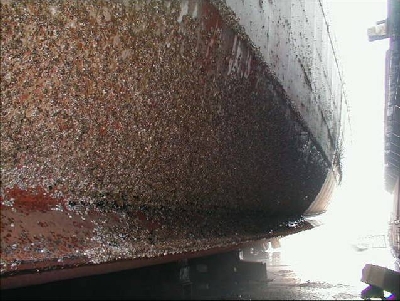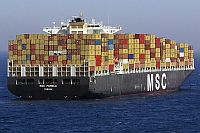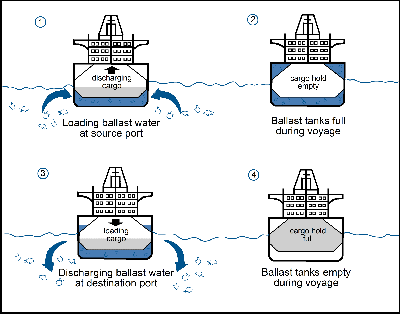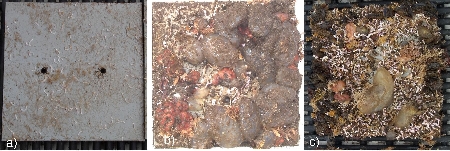4. Invasive Species in the Ocean
Transport of marine invasive species (1/3)
Endemism can be preserved by natural barriers, such as rivers, oceans, mountains, deserts or climatic conditions.
Due to globalisation and growth in the international trade and tourism industries these natural barriers become more and more
ineffective. As a result, species have been able to travel great distances to new habitats where they become alien or, in many cases,
even invasive species.
The introduction of alien species to new environments takes place on different pathways. The most important pathways are listed below
in their order of magnitude (taken from Molnar et al. 2008).
- International shipping (69%)
- Aquaculture (41%)
- Canal construction (17%)
- Aquarium trade (6%)
- Live seafood trade (2%)
1. Cargo ships: space shuttles for alien hitchhikers
Over 80% of the worlds trading goods are transported by ships across the oceans and through canals. The cargo is discharged at the port of destination and in most cases there is no freight to go back to the home port. However, the construction of the cargo ships does not allow them to travel empty without losing stability and manoeuvrability. Hence they have to take on ballast to regulate the stability by increasing the draft and changing the trim, or to maintain stress loads within acceptable limits. For hundreds of years, ships have therefore taken on solid ballast in the form of rocks or sand. The disadvantages of this method are great efforts to load and unload the material and its shifting when the ship is moving due to rough seas.
Since the end of the 19th century, solid ballast was therefore displaced by ballast water. Cargo ships have separate tanks used for either cargo or ballast water. Before a vessel is departing a port, water is pumped into the ballast tanks. At the port of destination this water is released again into the sea.
The problem is that there are thousands of aquatic species as well as sediment in the ballast water that may be transported around the world. Everything small enough to pass the ships' ballast water intake ports and pumps may enter its tanks. Marine organisms in ballast water range in size from bacteria and other microbes to 30 cm fish. These ocean hitchhikers are introduced to a new environment when released at the port of discharge. It is estimated that at least 7,000 different species are being carried in ships' ballast tanks around the world during one journey (GloBallast 2008). Some zooplankton species have been reported to survive more than 4 months in ballast water tanks (Gollasch and Nehring 2006). However, the vast majority of the transported species do not survive the trip and their new home.
Another means of transport for marine species by cargo ships is through hull fouling. Marine organisms such as algae, mussels or barnacles have the ability to stick to the ships' body and travel with it around the globe. Apart from slowing down the ship and therefore increasing fuel consumption by as much as 20 percent, these organisms too may become invasive in new environments.

Photo: Propulsion Dynamics Inc./Marine Photobank
Marine organisms may grow rapidly, covering the hull of the ship within the range of months. One method of predicting how many of which marine species will settle on ships in a certain region is the usage of so called settlement plates. These are plates which are hung into the sea water. In certain time intervals the species that have settled are recorded.



